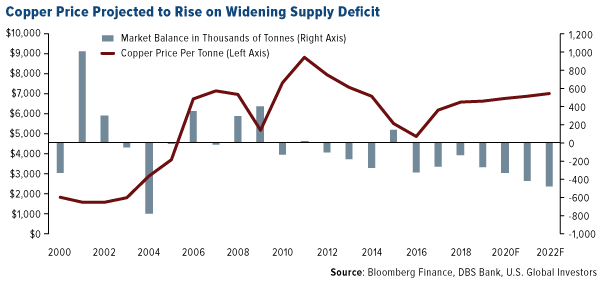2019 could be not only copper’s year but also copper miners’ year. The price of the red metal is up about 6 percent so far in 2019, trading at close to $2.80 a pound. That’s about 67 percent short of the metal’s all-time high of $4.62, set in February 2011.
Last week Morgan Stanley joined Citi and Goldman Sachs in making a bullish call on the metal. The investment bank projected a 14 percent upside for copper in 2019, based on a widening supply deficit and the likelihood of a resolution to the U.S.-China trade spat.
As for copper miners, Morgan Stanley upgraded Freeport-McMoRan, while Goldman Sachs recently upgraded Rio Tinto. Piyush Sood, lead analyst at Morgan Stanley, said in a note that Freeport’s “earnings sensitivity to copper is still the highest among its peers, and combined with its high trading liquidity, we believe it will emerge as the go-to large-cap stock for exposure to a copper price rally.” Shares of the Phoenix-based company’s stock jumped nearly 7 percent on the news last Wednesday.
Singapore-based DBS Bank also sees a copper shortage over the mid-term. Analysts expect supply to be in a deficit each year between now and at least 2022, when it could be at its widest since 2004.
“Copper is king for this electrification trend taking over the global economy,” Matt Gilli, CEO of Nevada Copper, told Reuters. “We see demand increasing steadily in the years ahead and, so far, supply is not keeping up.”
To meet surging demand, four U.S. copper projects are set to open by next year, the first to do so in decades, according to Reuters. And Ivanhoe Mines, founded by my friend Robert Friedland, is in the process of developing the Kamoa-Kakula copper deposit in the Democratic Republic of Congo, which Robert describes as the second-largest copper mine in the world.
“You’re going to need a telescope to see copper prices in 2021,” Robert told us when he visited our office last year.








